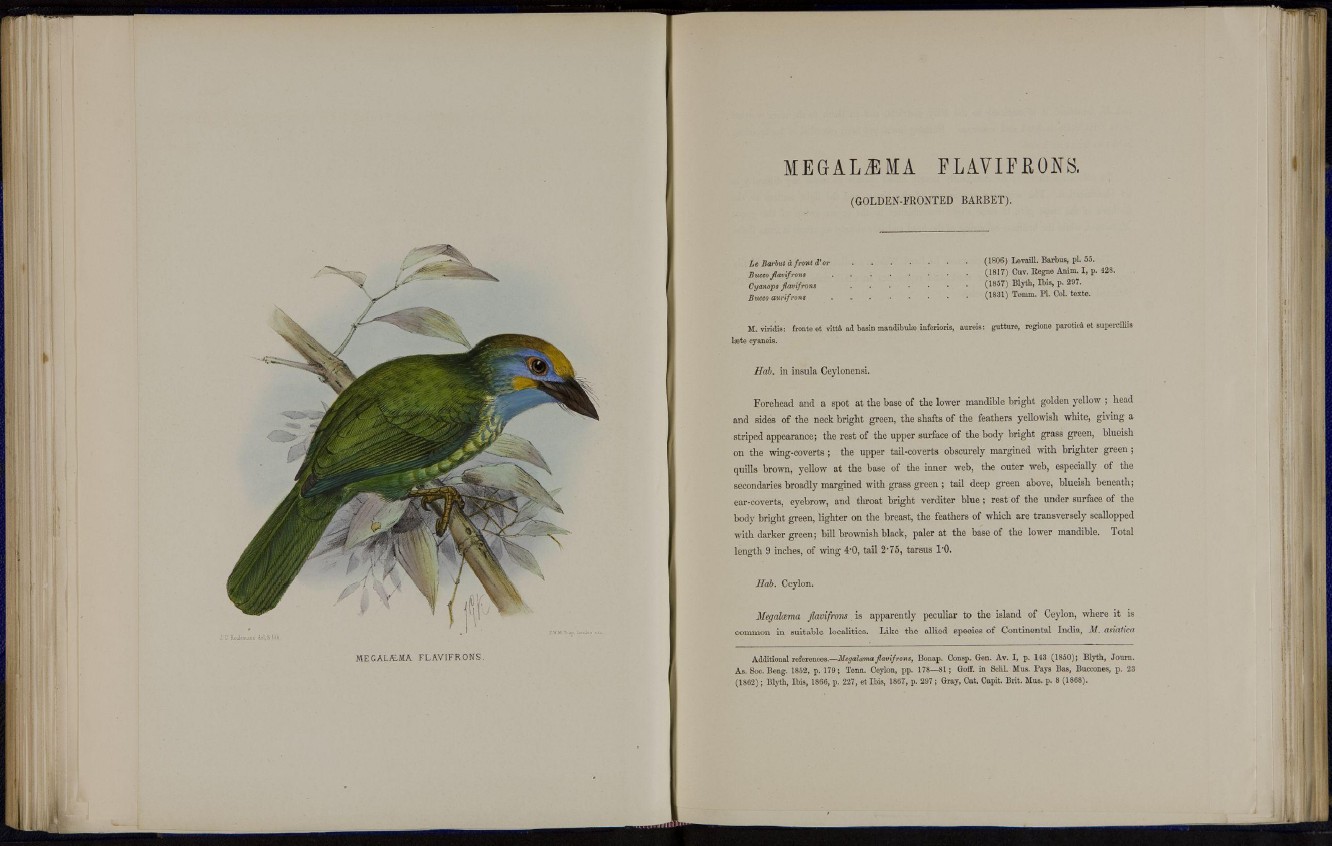
M E G A L O MA FLAVIFRONS.
(GOLDEN-FRONTED BARBET).
(1806) Levaill. Barbus, pi. 55.
(1817) Cuv. Regne Anim. I, p. 428.
(1857) Blyth, Ibis, p. 297.
(1831) Temm. PI. Col. teste.
Le Barbut á front d or
Buceo Jiavifrons
Cyanops flavifrons
Buceo aurifrons
M. viridis: fronte et vitto ad basin mandibular inferioris, aureis: gutture, regione parotic* e t Bupercuiis
lsete cyaneis.
Hab. in insula Ceylonensi.
Forehead and a spot at the base of the lower mandible bright golden yellow ; head
and sides of the neck bright green, the shafts of the feathers yellowish white, giving a
striped appearance; the rest of the upper surface of the body bright grass green, blueish
on the wing-coverts ; the upper tail-coverts obscurely margined with brighter green ;
quills brown, yellow at the base of the inner web, the outer web, especially of the
secondaries broadly margined with grass green ; tail deep green above, blueish beneath;
ear-coverts, eyebrow, and tliroat bright verditer blue ; rest of the under surface of the
body bright green, lighter on the breast, the feathers of which are transversely scallopped
with darker green; bill brownish black, paler at the base of the lower mandible. Total
length 9 inches, of whig 4*0, tail 2*75, tarsus l'O.
Hab. Ceylon.
Meyalwma jiavifrons is apparently peculiar to the island of Ceylon, where it is
common in suitable localities. Like the allied species of Continental India, M. asiatica
Additional references.—Megalarma flavifrons, Bonap. Consp. Gen. Av. I, p. 143 (1850); Blyth, Jouru.
As. Soc. Bong. 1852, p. 179; Tenn. Ceylon, pp. 178—81 ; Goff. in Sold. Mus. Pays Bas, Buccones, p. 23
(1862); Blyth, Ibis, 1866, p. 227, et Ibis, 1807, p. 297 ; Gray, Cat. Capit. Brit. Mus. p. 8 (1868).